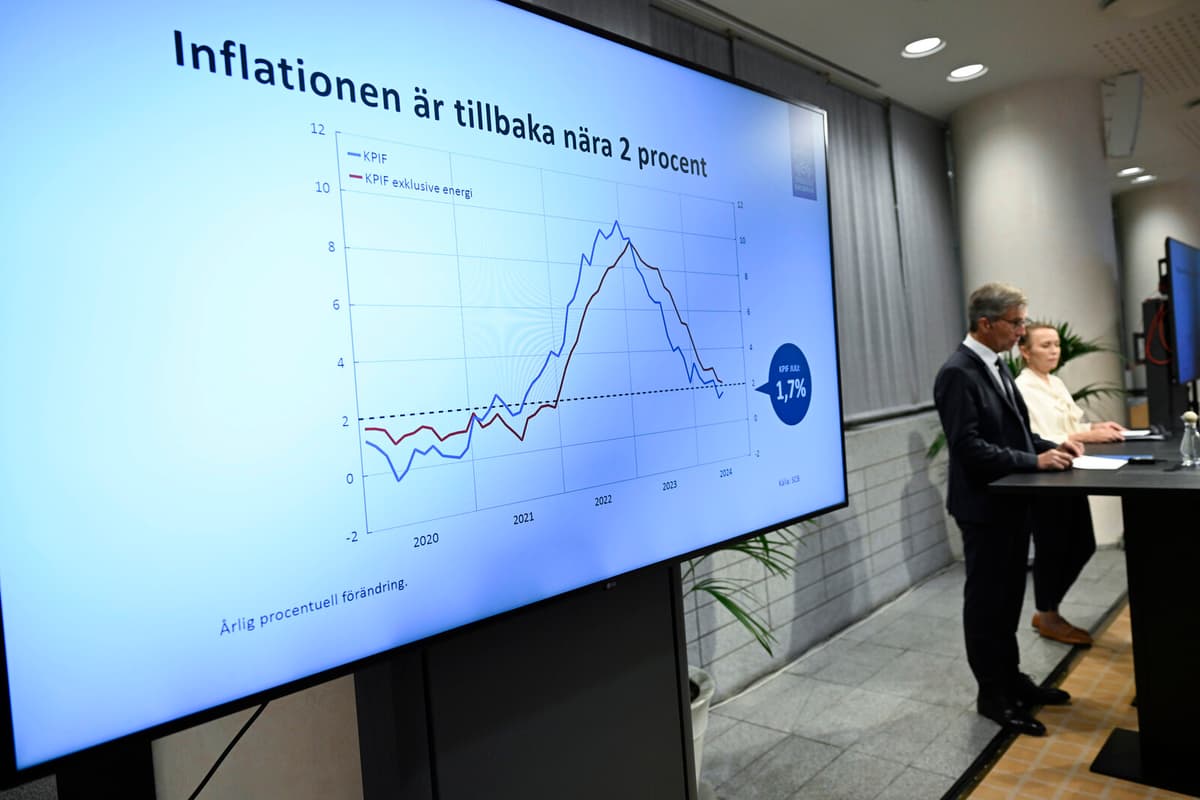Perhaps one wants to review details regarding, for example, product categories or how it looks in different sectors in the large report, which will come in a week or so, he reasons.
"It's up to the market to decide"
Other heavy forecasters are on the same track.
What will likely happen is that this rapid figure becomes the important one, says Albin Kainelainen, General Director of the National Institute of Economic Research (KI).
John Eliasson, product manager for inflation reports at SCB, sees the same development ahead of him.
But we'll see. It's up to the market to decide, he says.
It is SCB that has taken the initiative for the new report series, called "Snabb-KPI". A "strong demand" for faster data lies behind the decision – and that euro countries have long been reporting the same type of rapid estimates, according to Eliasson.
SCB has until now stuck out as the statistical authority in Western Europe that is last out with inflation figures.
There are users who have asked why. Now it won't be like that anymore, says Eliasson.
Inflation is expected to fall
Kainelainen at KI believes that Snabb-KPI on the margin can get the Swedish Central Bank, which uses inflation as a decisive parameter for its interest rate decisions, to act a little earlier.
It's clear that it can play a role on the margin, says the KI chief.
It's generally good to have more data and these have high reliability, it has been shown in other countries. But it's not always good to get more data if it's very shaky. It can cause problems, he adds.
Among analysts, the average forecast ahead of Tuesday's report on September inflation – SCB's first Snabb-KPI – is that KPIF inflation will fall to 1.1 percent, down from 1.2 percent in August, according to a compilation of forecasts made by Bloomberg.
When it comes to KPIF excluding energy prices – that is, the underlying inflation – expectations are at 1.9 percent, compared to 2.2 percent in August.
The Swedish Central Bank's target is a KPIF inflation of 2.0 percent.
Unpublished inflation figures have existed internally at the Statistical Central Bureau (SCB) for some week before the ordinary inflation report in many years. SCB's analysis ahead of this week's premiere has shown that KPIF inflation on average – since 2017 – has only deviated by 0.01 percentage points from the final figure.
It is largely the same data basis behind the preliminary and the ordinary inflation report. The big difference is that the review and control of the basis are not completed when Snabb-KPI is presented. It will also be significantly fewer details.
In euro countries, the first inflation report comes already at the end of the month the report describes – that is, roughly a week before the Snabb-KPI that SCB will now start reporting.
Sources: Bloomberg, SCB





